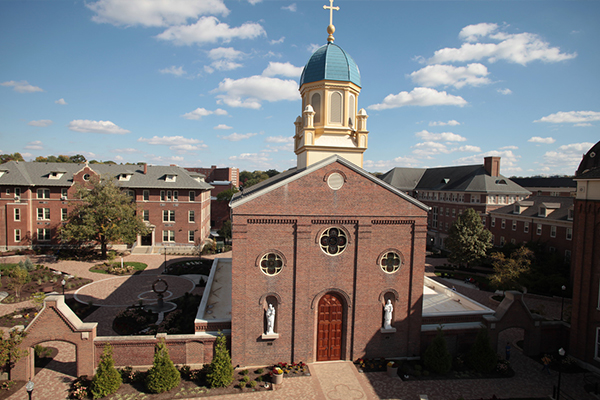Blogs

Exploring Nation and Community through Dialogue… In Spanish
Learning to speak another language isn’t easy. Telling personal stories can also be challenging. Combining the two? Even harder. Yet this is precisely what Dr. Arne Romanowski has called on her students to do in Spanish 312 (Advanced Spanish Conversation II). For the past two years, the course has engaged in dialogue sessions every semester on the subjects of homeland and nation (patria y nación) and neighborhood (barrio) in Spanish, this year with two facilitators, Dr. Julio Quintero and Dr. Ramón Stern, both contributors of the University of Dayton’s Dialogue Zone.
Dr. Arne Romanowski, Assistant Professor of Spanish and Latin American Studies at the University of Dayton, says that dialogue “provides a unique opportunity for students to engage with each other in a conversational format that is seldom emphasized in their formal education. Being able to share from a deeply personal place and to interact with their peers without the pressure of having to advance or defend an argument allows them to use the Spanish language in new and exciting ways.” A student in the course noted that “speaking freely without there being one right answer was the best part.”
The dialogues have been well-received by students, as they emphasize the power of both dialogue and storytelling to bring language learning to life. Yet dialoguing in a second or additional language does pose unique challenges. “Students may not have the exact same vocabulary and linguistic tools they possess in English, but this is both a challenge and a great opportunity,” says Dr. Ramón Stern, Assistant Director of Campus Engagement at the Center for International Programs. “Speaking in Spanish instead of English means that the need for communication outweighs everything else. Dialogue becomes both an opportunity to share personal experience and acquire new vocabulary and competencies in Spanish.” As a student in the course put it: “Dialogue helped me to get to know my classmates better.”
Effective language learning requires the use of the target language in ways that are authentic and meaningful – contexts and situations that are real for the speakers of the language. “We begin our dialogues by inviting students to share general memories and stories related to people, spaces and events connected to concepts such as nation, fatherland/motherland, and barrio,” explains Dr. Julio Quintero, Director for Inclusive Excellence Strategy and Initiatives at the Office of Diversity and Inclusion. “As the dialogue progresses, facilitators examine narratives and conceptions related to privilege and inclusion. It quickly turns introspective, as students interrogate commonly assumed narratives and notions about who belongs in certain spaces, including nation and community.” Using Spanish to examine deep perceptions and values can turn language learning into a vehicle for self-discovery and reflection and can provide opportunities to collectively devise strategies for greater social justice and inclusion.
The dialogues in Spanish 312 demonstrated a deep sensitivity to the divisions and connections among students. Students explore a variety of narratives about homeland, nation and neighborhood that are meaningful for all involved, all in a second language. “This combination of language learning and deep sharing is unlike any other set of dialogues I have participated in as a facilitator. The joy of seeing students open up and develop both by sharing personal details of their life and displaying vulnerability of learning a new language really builds connections between all participants,” Dr. Stern commented.
The opportunity to traverse the borders of language and divergent experiences at the same time is a unique experience that can resonate for students and facilitators alike long after the dialogues are done. Coupling language pedagogy with the principles and methods of dialogue (i.e, creating space for multiple perspectives, cultivating listening skills, and promoting critical understanding) enriches both language learning and dialogue sessions simultaneously, allowing for growth, development of vocabulary and modeling of complex conversations in Spanish that prepare students for experiences and travels abroad. Dialogue in Spanish ultimately introduces students -in a safe and supportive environment- to meaningful ways to connect with native speakers of another language.
The power of dialogue extends across many barriers, and can clearly enrich educational experiences. For more information about the Dialogue Zone and ways to collaborate, email dialoguezone@udayton.edu.
